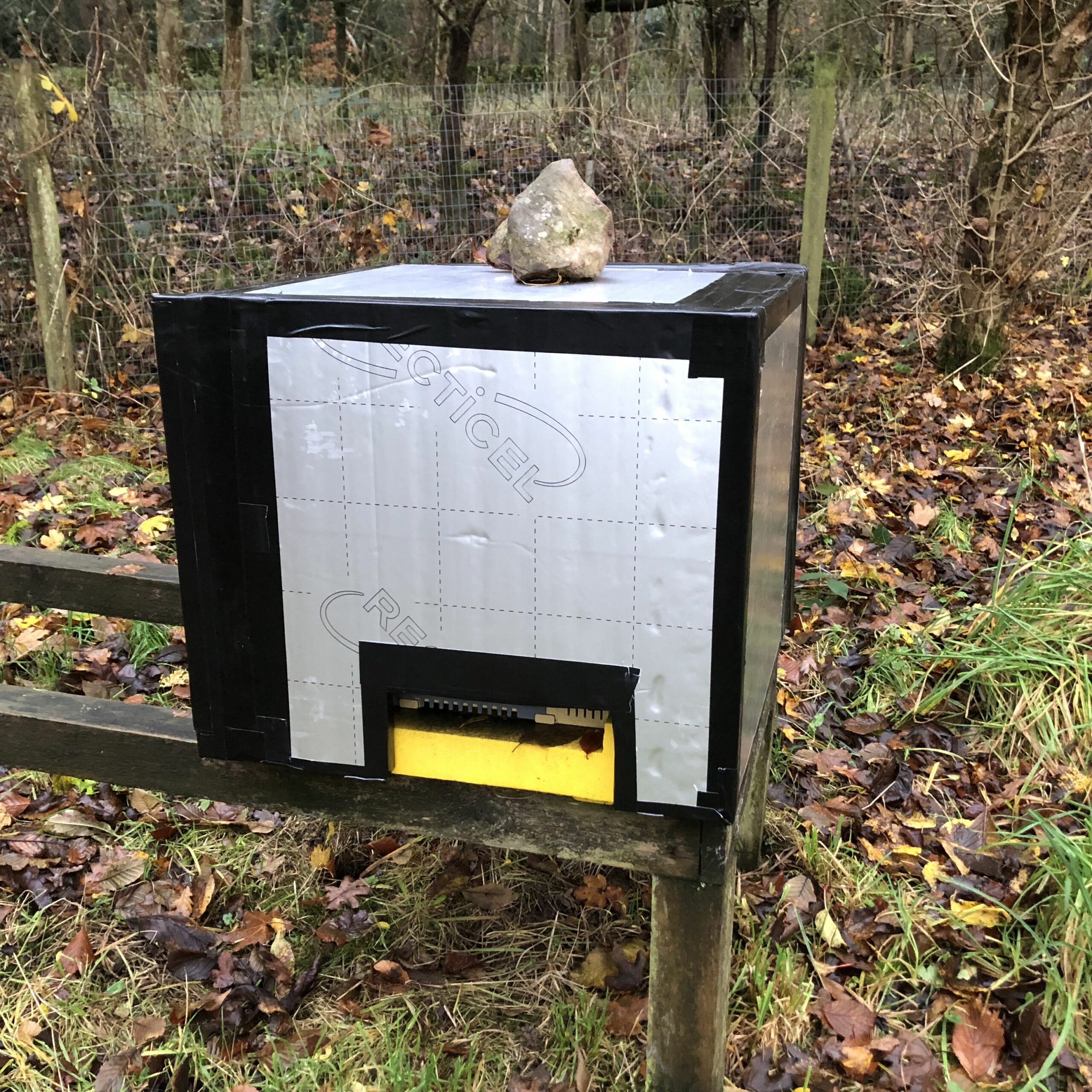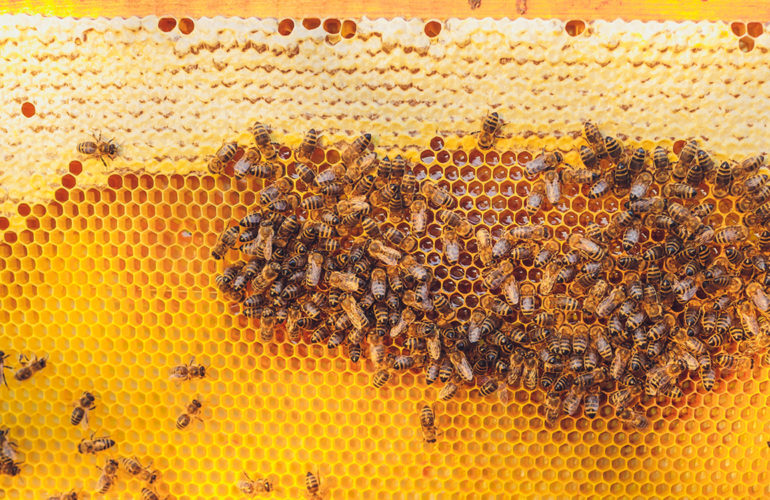Chris and I popped up to the Apiary on Sunday for the last visit of 2023 and wow, what a year it’s been! Our plan was to check fondant levels, look for signs of life, assess losses and weigh up the strength of the remaining colonies. Plus wrap up the last of the wooden hives with a cosy insulation box made from KingSpan plus gaffer tape that just slides over the hive.
All of this with minimal disturbance. I mean, you wouldn’t want a couple of blundering giants lifting the roof off and letting the cold air in to your cosy nest, would you?
We’d chosen this weekend as it was forecast to be (relatively) warm ahead of another cold snap. And, yep, I admit it, I wanted to check in how they’d fared during the spells of intensely cold, then extremely wet weather of the last weeks.
Well, it proved incredibly easy to spot signs of life! At a balmy 10˚C, our hardy local black bees were out flying and making the most of the opportunity to defecate and possibly even to forage though there’s precious little still out.
There was considerable activity around the entrances to both of the hives in the observation area. Hive #1 (previously fitted with its insulation cap) still had fondant which Chris thought sufficient for at least another month. There were also plenty of bees accessing the fondant. The Vincent hive, while similarly fit and active-looking, were down to the last dregs (or rather the last sugar crystals) of fondant, so topped up.
Note re Vincent hive – the way we have it configured for winter is with an observation dome set directly on top of the brood box. Blocks of fondant have to be slipped in under the dome. While the dome itself is great – we can see the bees without lifting it and therefore without disturbing the feeding bees or the cluster. BUT to top up the fondant, we had to lift the dome, stuff the new blocks in and close the dome. All done as quickly (but gently) as possible of course. But the wee lasses made it quite clear we were v unwelcome, food-bearing or no.
Onto the main apiary … Mark has now taken the poly nuc away to one of his apiaries where it is huddled with his other nucs to share warmth. (This is great! Although a strong nuc, it is of course, still a small colony and likely in need of a little nurturing to see it safely through the winter. AND to be honest I would cry (and I think Chris would also shed a tear) if these lasses were to die now after all the angst of their lengthy (and we thought terminal) queenlessness in June and July)
Mark had also insulated the wooden hive – they were active, had plenty of fondant and were busy munching away on it.
In fact, all of the hives were showing some activity at the entrances (though not so much as the observation hives), plenty of fondant and plenty of bees accessing the fondant.
EXCEPT for hive #9 (one of the blue Abelo hives) – only a solitary bee appeared at the entrance as we observed it. There was plenty of fondant left BUT v few bees accessing it AND a number of dead bees in the eke around the fondant block. Chris cleared the entrance using the entrance plate and found a large number of dead bees. This colony is a real cause for concern and is v unlikely to make it through the winter.
We have reduced the entrances to a single bee space to help reduce draughts into the hive.
In the side apiary, there was plenty of activity in the “nuc” hive, plenty of fondant and plenty of bees accessing the fondant. It is wrapped up warm and although only slightly larger than nuc-sized appears a good strong colony. The brood space was reduced to six frames back in October, with end boards and insulation blocks in the gaps at each end to reduce the amount of space they need to keep warm. This seems to be paying off.
And finally on to the double-decker hive. Wow! What a really great decision by Mark back in October to stack the weak split on top of the strong split to share warmth. At that point the smaller of the two hives was clearly struggling and had dwindled to near nuc-size. It is now thriving – lots of activity at the entrance, lots of fondant and lots of bees accessing the fondant. We had to lift the top hive off in order to have a quick check of the fondant-status of the bottom hive. The top hive made their displeasure known and clustered, fanning, at the entrance to the Snelgrove board that divides the colonies.
The lower hive also had plenty of fondant left and lots of bees consuming it. So we replaced the top hive asap. While the lower hive looks in good shape, we both felt that the top (weak) hive is now in fact the stronger of the two – though that might just be we saw more of them as we disturbed them more.
All-in-all, the apiary looks in good shape. Of the nine colonies, several look to be positively booming and only one seems to be struggling at this point, though of course the winter has barely begun.
Next visit planned for mid January; again a light touch, fondant and activity check.
Meanwhile, Merry Christmas and a healthy, productive New Year to all the wee lasses!
Kirsti




